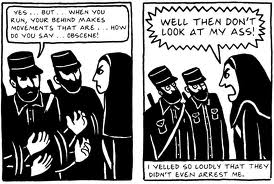 Kathryn Stockett’s debut novel The Help quietly landed on the shelves of bookstores over the summer in 2009. Originally it was thought that the novel wouldn’t do so well considering Stockett received a total of 60 rejection letter from publishers (as the saying goes: try, try, and try again my fellow writers!)
Kathryn Stockett’s debut novel The Help quietly landed on the shelves of bookstores over the summer in 2009. Originally it was thought that the novel wouldn’t do so well considering Stockett received a total of 60 rejection letter from publishers (as the saying goes: try, try, and try again my fellow writers!)
The Help, however, sells over 3 million copies and winds up on the New York Times bestseller list for more than a hundred weeks and is still one of the most read novels in book clubs. The Help is a collection of heart-warming, hilarious, chagrin literature that satisfactorily meets expectations but doesn’t quite surpass them. The novel extrapolates issues on civil rights and gender politics, ostensibly presenting an untold story, when it’s the same story we see and read every day: the privileged and the oppressed. Despite the good feelings the novel emanates, it merely scratches the dichotomy of racial and political tensions, which ends up being the book’s pitfall.
The Help takes place in Jackson, Mississippi in the 1960s. Narrated by three women—Aibileen, Minny, and Skeeter—they each tell a different story. Aibileen and Minny are both working African-American maids while Skeeter is the daughter of a Caucasian family owning cotton farms. The novel opens with Aibileen working for Elizabeth Leefolt and taking care of Leefolt’s baby girl. We also learn about Aibileen’s friend, Minny, who’s been fired from her maid job. In a string of convenient events, Minny lands a job working for the ostracized Celia Foote. In the meantime, Skeeter arrives back home after finishing college and wants to find work as a writer. When Skeeter arrives home, however, she learns her maid, Constantine, who was more of a mother than her biological mother, has supposedly moved to Chicago to be with her family. Skeeter probes about Constantine’s whereabouts but comes up empty-handed. During this time, Skeeter finds work as an advice columnist, giving tips on easier ways to clean utensils. Skeeter, having no knowledge of how to clean anything apparently, asks her friends if they could talk to their maids, which eventually leads to Skeeter talking to Aibileen. The friendship is slow at first, but once the sparks are lit, the two are the catalyst for inspiring change.
The plot of The Help launches slowly like an insect going through the process of metamorphosis; it takes a while for the story to come out. Stockett lays out the groundwork by introducing the cast of maids and their white, female employers. The workings of the plot heavily rely on the feminine vernacular of gossip. Minny’s story doesn’t occur until Hilly spreads a nasty rumor. Stockett revisits this concept with all of her characters, using gossip as a kind of plot agent to motivate her characters and show who they are. Gossip, or the rumor mills, are multifaceted in the novel, not only in how they can damage and improve one’s reputation, but also the effects that occur when one chooses to respond or even ignore rumors. The nature of gossip is infectious and works really well in moving the story.
The cultural and racial issues that are prevalent in the book are considerably polite and tamed. The characters, more importantly the protagonists, were predictable—with the exception of Minny and her infamous chocolate pie. Minny, who is by far the most outspoken, feels contained and yet, when allowed to speak her mind, her character ends up perpetuating the capricious stereotypes of an angry black woman.
Although the book attempts to transform the characters’ preconceived attitudes between the different ethnic groups, there’s hardly a sense of reproach or animosity beforehand, which is perhaps omitted in favor of boosting the protagonists’ popularity. We see this suggested in how Stockett flatly writes her antagonist, Hilly, who could only do evil things, her wickedness laid on thick like slabs of butter. By the end of the novel, it’s clear as to who is generically good and who’s evil.
Stockett seems to incite stereotypes with her writing style, reflecting a deep Southern, minimalistic, grammar dialect. When Aibileen and Minny are narrating, the dialect is more pronounced and archaic contrasting with Skeeter’s narration, intelligible and matured. Arguably Skeeter has more education, plus a degree in English studies; however, the writing style isn’t always consistent or feels authentic. Sometimes this writing style works, and in The Help it only sometimes works. It’s believable at times but falters amongst the characters toward the end. It sometimes feels forced instead of sounding palpable.
When the ending finally arrived, I sighed in relief. I was both disappointed and blithe about the outcome. Stockett’s novel isn’t enlightening; it’s a book designed to make us feel good, which probably explains its constant book tour in book clubs. The only way the book could possibly be revolutionary to you is if you’ve been living under a rock, especially in the last year with the news being flooded with new cases of civil right oppression and heated racial arguments. Once in a while, I will pick up a book to feel good. Who doesn’t? It’s a book to cozy up to and read, right up there with Eat, Pray, Love—but it’s certainly not groundbreaking.
Rating: 3.2 out 5






